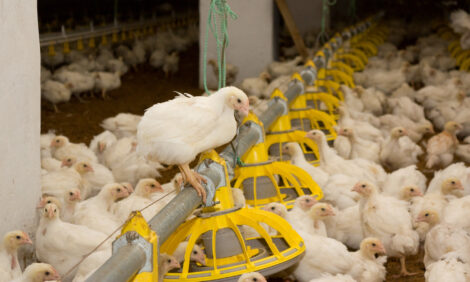



FAI Focussing on Animal Welfare Outcome Measures
UK - Carly Scott is a researcher at FAI farms in Oxford. Here she explains the principles behind welfare outcome measures and the work her and the Science Team are doing in this field.What are welfare outcome measures?
Welfare outcome measures are simple metrics that describe how an animal has experienced the environment in which it has lived. Outcome measures cover the lifespan of the animal and are collected both on-farm and at slaughter by directly observing the animal. They include both physical and behavioural metrics that focus on attributes associated with good quality of life. Some measures are common to all species, such as mobility or disease incidence, and others are species-specific, for example feather cover in laying hens.
Is this system widely used throughout the industry?
Key welfare outcome measures for each species have been developed and validated by the European Welfare Quality Consortium (2009). Many are already recorded by farmers and processors for production and management purposes and are therefore widely collected throughout industry using standard measuring procedures. This makes data collection practical and cost-effective and provides robust information about the welfare of animals across the supply base.
Why do producers and retailers collect data on welfare outcome measures?
Traditionally, ‘input’ measures have been used to inform how farmers should provide for good welfare, for example through the type of feed given or the size of housing space, etc. Although these measures are important in managing livestock systems, they do not directly measure the experience of the individual animal and often fail to capture the full effect of a system upon the animal’s welfare.
Welfare outcome measures provide an objective tool to measure welfare, regardless of the production system, breed, climate, and so on. The data can be used to benchmark across farming operations, locate best practice and identify areas that can be improved within supply. This information provides valuable feedback for farmers to improve the welfare and profitability of their animals.
How do the results you collect impact on producers?
Most farms and sectors have areas where improvement can be made. Outcome measures can highlight these opportunities and provide a measure of progress where solutions are put in place. Importantly, due to the nature of livestock farming, improvements in animal welfare can lead to direct increases in farm profitability and the long-term sustainability of the business.
This approach is about providing robust information about what’s happening on farm, not about telling farmers how they should farm. Unlike input based systems, outcome measures allow farmers to develop their own solutions and innovations that best suit their farming system. This flexibility and creativity is crucial for tackling some of the long-standing challenges to sustainable food production.
Looking to the future, are welfare outcome measures an important part of creating sustainable supply chains?
We define sustainable supply chains as those that are environmentally, economically and ethically – for people and animals – sound. To work towards building farming systems that meet these principles, we must know how they perform across all these criteria.
Sustainability outcome measures include environmental (e.g. water and energy consumption per kilogram liveweight produced), ethical (e.g. community and staff wellbeing) and economic measures (i.e. profitability).








